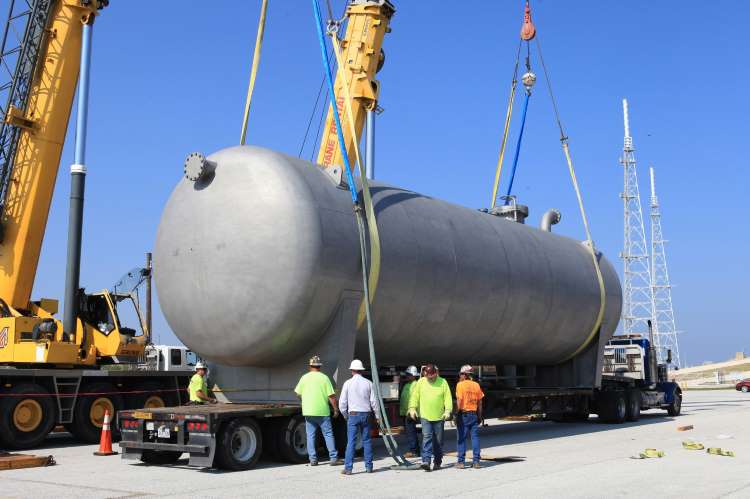
Even as the developed world espouses the virtues of free markets, India’s exports are being restricted due to substantial subsidies provided by these countries for the production of green hydrogen. Last week, Union Power and Renewable Energy Minister RK Singh accused advanced economies of erecting barriers to the trade of green hydrogen by offering generous subsidies that sometimes match the production costs, preventing India from exporting the green fuel and rendering discussions on clean energy transition futile.
Although the power minister refrained from naming any specific country, the United States seems to be the one implicated, as it approved a 10-year tax credit in November 2021, valued at up to $3 per kilogram of green hydrogen. Considering that the cost of producing the green fuel is also around $3, the minister argued that by providing subsidies equivalent to the production cost, the particular country is effectively incentivizing the establishment of green hydrogen production facilities at their expense. This contradicts the developed world’s professed commitment to free markets and implies that they are fostering trade barriers.
READ | India set to open the space sector to global investors
Singh further said that even the European Union (EU) is engaged in protectionist behaviour. The EU faces a threat to its hydrogen trade due to demands from electricity groups concerned about competition which advocate a carbon tariff on hydrogen imports into the EU.
The rise of protectionism poses a threat to the global energy transition. It is evident that all countries are vying to secure the largest share in the ongoing race for energy transition as it makes economic sense. The flow of energy goods and the configuration of energy supply chains are already being reshaped. Within the next decade, clean energy is poised to become a major manufacturing sector, with the potential to create millions of jobs. The industrial strategies that countries adopt now will determine their portion of this pie.
Therefore, when countries such as the United States introduce initiatives like the Inflation Reduction Act of 2022 which seeks to invest in domestic energy production while promoting clean energy and other objectives, they set a precedent for other nations to prioritise economic benefits over climate change goals. However, there is another side to this coin: fostering healthy competition among nations may lead to enhanced innovation and competitive pricing. The IRA includes significant provisions supporting domestic supply chains to ensure that materials for the energy transition are manufactured in the United States.
This is not the first instance in which rising trade protectionism has been highlighted on the global stage. Numerous analysts have already discussed how protectionist tendencies hinder climate mitigation efforts. Trade plays a vital role in disseminating the technology essential for climate transition, but this crucial process is hindered by the narrow-mindedness of a handful of countries that fail to embrace a liberal and free trade approach. Despite their vocal support for free markets, their actions often contradict their words, as underscored by the power minister.
Policies like the IRA and how other nations respond to them will shape the global energy transition. However, a policy exclusively focused on domestic manufacturing and consumption is unlikely to contribute to emission reductions or enhance energy security for allies or the world. The United States will need to devise mechanisms to share the opportunities created by the IRA, enabling the development and deployment of low-carbon technologies to reduce global emissions.
India’s green hydrogen mission
Meanwhile, India is keen to forge partnerships with countries committed to expediting the transition to green practices, as it is directly vulnerable to the impacts of climate change. Numerous studies have already indicated that India is among a select group of nations that will experience the greatest repercussions from escalating temperatures.
Green hydrogen is hailed as the ultimate solution for clean energy and plays a critical role in combating climate change. Recognizing the potential of this fuel and considering India’s growing energy demands, the government approved the National Green Hydrogen Mission in 2022. The mission aims to incentivize the commercial production of green hydrogen and position India as a net exporter of this fuel. The total allocation for the mission amounts to Rs 19,744 crore.
READ | India struggles to reduce dependence on coal energy
India aspires to achieve energy independence by 2047 and reach net-zero emissions by 2070. The key to attaining these targets lies in accelerating the adoption of renewable energy across all sectors of the economy and transitioning to clean energy as swiftly as possible. In this regard, green hydrogen is pivotal. It is projected that India will achieve 65% of its installed capacity in non-fossil fuel sources by 2030, surpassing the established target of 45%. Minister Singh also expressed the likelihood of storage becoming economically viable by that time.
The Union Budget for the current financial year has earmarked Rs 19,700 crore under the production-linked incentive scheme to promote investment in the clean fuel. Reliance Industries, GAIL, NTPC, Indian Oil Corporation, and L&T are the leading Indian companies betting big on green hydrogen. The government is creating a regulatory environment to support green hydrogen industry in the country.
India spends more than $160 billion a year on energy imports. As there is no viable alternatives, India continues to be heavily dependent on coal and oil to meet it rising energy needs. Green hydrogen is central to the country’s strategy to reduce its dependence on carbon fuels.

